Genre of Silence
Genre of Silence
by Matt Briggs
My Father and the Genre of Silence
My father died in 2011 and left behind him a rebuilt red Chevy Super Impala convertible 1968, a couple of houses, and about a half dozen shoeboxes full of several thousand photographs of the Central Cascade mountains. I hadn’t spoken with my father for five years before his death. Even before even though my dad had a lot to say and said it, his conversation was hardly intimate or even interactive. He delivered monologues that precluded any type of exchange. His talk was the superficial “How’s the weather,” sort of talk. His main line of conversation was to deliver very long monologues about his hikes in the Alpine Lake Wilderness area. If this sounds kind of boring and event abstract, it was. And he could not handle any sort of interruption. Although I quickly lost a sense of what river basin he was in, or which ridge line he was following, he told these stories with a kind of urgency. It was a bit like listening to a lab rat narrate his passage through a maze. Only at the end there wasn’t cheese, but rather my father’s attempt to describe the view from a remote mountain crag.
This ended up being a paradox. My father was haunted by the uncertainty of death. He was uncertain about when it would happen. He was confused about what might cause his death. He was confused about the result of his death. Your presence fails at your death, and you are as if you never were. All that remains are remains. Your existence is gone, and what is left is a pile of junk and rotting flesh. My father raised me as an atheist. His certainty about the total annihilation of death became less pronounced and more tentative the older he got and as he knew more people who had gone. Confronted with the reality of their nonexistence after their death, my father objected to unfair this was. Isn’t it a fundamental betrayal of existence if after you have existed, you do not? Surely existence couldn’t contain this contradiction?
I’ve tried to work on stories about my father’s life in the past. My parents divorced in the early 1980s. My father was married after that, divorced again, and even at one point went to prison. The events that would make up the story of someone’s life were not the things my dad talked about. I didn’t know he was going to prison, had been in prison, or that he had been released from prison. In fact, the narrative of his life is nearly impossible to piece together. I know a fragment here and a fragment there, but there is no sense of progression or beginning or ending. And it isn’t like when my dad was alive he was actually absent. He was happy to go on a hike. He was thrilled to narrate his latest excursion to an Alpine Lake in the back country. His absence did not entail his physical absence.
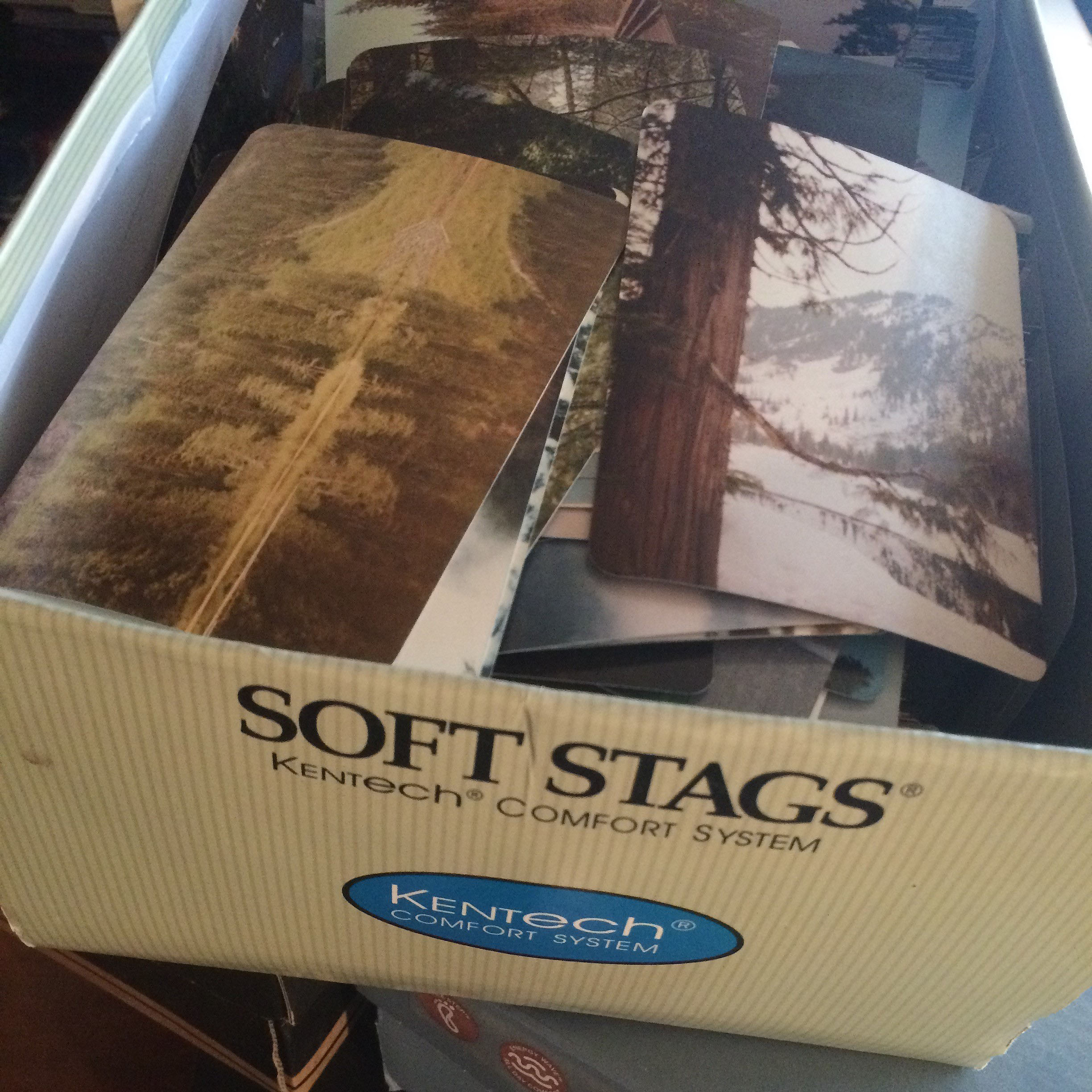
In looking through my father’s photographs I figured I could piece together some narrative or story, and yet aside from the handful of family albums prepared by my grandmother, my mom, and my Dad’s second wife –these albums had some context.
The boxes of photos, however, lacked not only people but they also lacked any sign of humanity aside from the obvious evidence that someone had taken the image. The implied humanity in the photos was the film and camera and that a human person who stood somewhere in the wilderness to expose the film.
In looking at them, a phrase came to me: “The Genre of Silence.” These photos told me nothing. Even as nature photographs, they were jammed into boxes without context. The images themselves were often blurry and of subjects like ‘blurry scrubs’, ‘pile of dark rocks in a black and white landscape taken with a color camera’, and so on. There was a happy accident here and there among the thousands of photographs, but taken as a massive pile of images they said nothing, and this saying nothing seemed a refusal to me, a gesture of silence.
Isaac Babel: the Master of the Genre of Silence
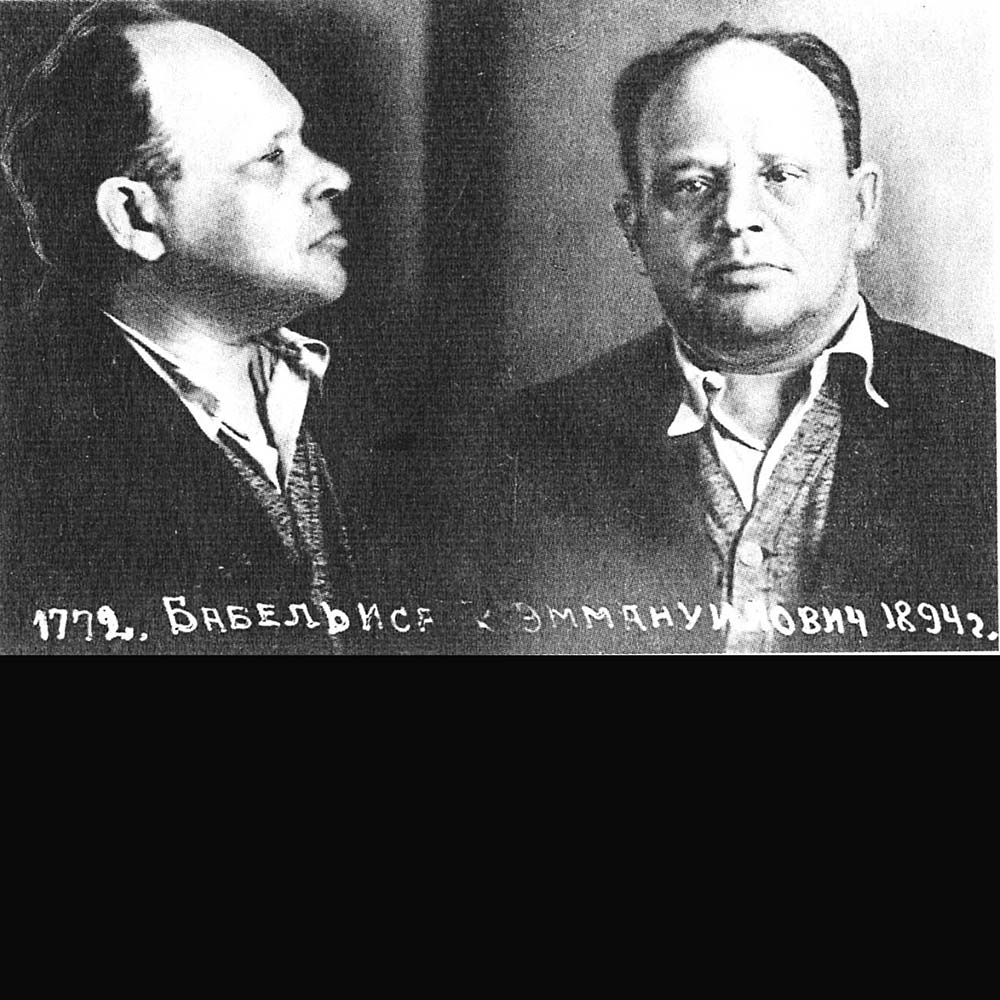
Isaac Babel, a Jewish and Russian short story writer, was one of the greatest naturalists who ever lived. His book The Red Cavalry and Other Stories along with James Joyce’s Dubliners–two early 20th century short story collections–are definitive statements of the naturalistic short story that has become so codified as a genre that writers of the literary short story don’t consider it a genre at all. There may be the genre sections in the bookstore: murder mystery, thrillers, travel books, science fiction, but literary fiction finds itself in a section-less section: just books organized in alphabetical order by the author’s last name.
Naturalism is a kind of writing that borrows from journalism. The great naturalistic writers of the 19th century such as Tolstoy and Emile Zola lifted from the techniques of reporters. It seems amusing now to think of War and Peace being considered a realistic novel, and yet at the time it was considered a startling and vivid slab of undigested observational power, a throbbing piece of life, and a photograph in prose. This type of work became central to our conception of the 20th century literary short story from what might be called the Russian and Soviet Realist. Sherwood Anderson and Hemingway readily accepted their influence, and through Hemingway the tenants of naturalism became synonymous with literary fiction. Any deviation from the fundamental approach of documenting reality as a stream of phoneme appealing to our five senses became something strange. It goes by terms such as magic realism, fabulism, post-modernism, slipstream, and so on.
Isaac Babel is one of the reasons this work came to be seen as conventional. He was a Jew who wore eye glasses from Odessa, a port town on the Black Sea. He was well educated and he served in the Red Army during the revolution. He served with a regiment of Cossacks that were thought of as the Vikings of Eastern Europe. The juxtaposing of Babel and the Cossacks and his clear, minimal writing that would focus on the concrete and specific details appealing to the senses, captured the experience of war, the anti-Semitism of the Cossack regiment, and their atrocities in high definition. Babel became one of the most celebrated writers in the new Soviet Union. His work was even made widely available in translation. There was a sense in the dawn of the Soviet Union that this would be a new world order and that artists, writers, and their labor would finally be supported in the same way as factory workers and farmers.
It didn’t work out that way. The Soviet Union kept the Tsar’s prison systems and expanded them into the Gulag. People with dangerous ideas were rounded up and sent away. To be killed before you got sent to Siberia was a good thing, because it meant being worked to death in the frigid hinterlands of the Soviet Empire.
Babel, whose collected work-up that included his celebrated book and a handful of fantastic short stories about his childhood in Odessa, indicated he was working on a magnum opus. He traveled throughout the Soviet Union, and did amass a large number of papers. He didn’t publish anything however for five years, and then ten years, and again for twelve years. He became head of the Writers’ Union, and in the early 1930s, delivered a famous address where he claimed that he was a master of a new genre, The Genre of Silence.
During this time some of the Cossacks he had written about in his book had become very influential in the Soviet Union. The problem with realism is that people think what they read is real even if you call it fiction, and so these Cossacks were not fans of how they were portrayed in the book. Worse, Babel had a long term affair with the NKVD chief. The NKVD was the precursor to the KGB. Babel was arrested on May 15, 1939 in the Great Purge and vanished along with his papers, and presumably, whatever he had been working on during this year of silence.
The master of the genre was never heard from again. After the fall of the Berlin wall, there was hope that his fate would be uncovered. Had he been sent to Siberia? Did he manage to get released and lived out his life in some obscure corner of the empire? And what happened to his work?
Unfortunately, he was executed shortly after his arrest, on January 27, 1940. His work was in an archive that burned down during World War II.
What separates a dilatant from a master in the art of silence is the potential of speaking and keeping that potential in motion. Babel will always have that potential. One day, we may uncover his work; Babel will break his silence.
My Father

My father drove a bus. Growing up he had been a night cook at the place where Westlake Mall now stands called the Copper Kitchen. It was a Seattle dinner with the theme of copper implements. My dad wore a white double breasted chef’s coat and a chef hat. Working nights, he had his days free to go hiking. My father was a cranky man, but the two things that he professed a deep love for were marijuana and the woods. The first time he smoked a joint in the late sixties, he said, was as if someone had removed a film from reality and revealed to him how existence was supposed to feel. He wanted to be that way all of the time. He liked the woods because they didn’t change. He could count on them to be as they had been and they would be that way when he came back to them. Naturally he liked to hike and smoke. My father kept a row of joints in his breast pocket and kept one going pretty much the entire he was in the woods.
It is fair to say that I wasn’t exactly sure what my father was like as an un-stoned man until my mid-twenties when he had to stop smoking because of his job driving the bus. He started driving the bus in 1979. My mom had gone back to school and taken a job in an office park earning more than him and that freaked him out. So, he got a job driving the bus. He liked driving bus. And for most of the 1980s, and into the early 1990s, could drive and smoke. Like any fastidious stoner – and one thing about real stoners is that they are a fastidious people when it comes to preparing and smoking pot –he knew where all of the greenbelts, vacant lots, and other secluded spots were where he could smoke. It was only because of truly random testing–and he told me they were being a bit suspicious of him already–that he had to stop in the mid-1990s. But he could not wait to retire and when he retired he wanted to be in the deep woods of the Central Cascades with a neatly lined up row of hydroponic joints.
My father, however, told stories about his hiking trips and they were the verbal equivalent of his photographs. They would go something like: “Well I got a late start that morning. I meant to wake up at the trailhead at 8:00 a.m., but actually slept until 8:00 and then didn’t get there until 9:30. I don’t know why I don’t just say that it was 9:30. It always takes me until 9:30 to get started.” And then he narrates the trip in painful detail up the switch backs, the state of the trail, and finally he arrives in the back country and he talks about his route across some remote ridge, and if you had a map – wait he’ll show you on the map – that it looks like a blot of contour lines and shading – and then he arrived at a lake he’d never been to before. He may describe the fish in the lake – rainbow and brook trout nearly every time. And that’s only half way, because he must narrate the entire trip back.
My father had been a chronic and in the 1980s began to sell hydroponic to a cocaine dealer. And so he had issues with his mood. He’d mellowed out to a highly functional alcoholic in his later years, but he was still a dick.
He got great delight from doing really mean things to people. He told me this story one time about driving a car off the road. People hate to get stuck behind the bus and so they would do all sort of strange things. One time there were two guys in a red convertible who were trying to get around his bus and my Dad wouldn’t let them pass. Finally, they entering 405 on a ramp and gunned their car to zip on the shoulder around his bus. My father edged the bus out slightly and their car tapped the front side of the bus and bounced. The bus was a large object planted firmly on the on ramp. The car tapped the bus at a poor angle, and was sent down the grass bank. They crashed with so much force the hood flew up. My Dad had pulled to one side and then checked the bus. There wasn’t even a scuff. The two guys were coming up the bank toward him, so he got in the bus and kept driving. Later the police pulled him over and he said, “Yeah they drove off the road. People do the weirdest thing around buses.” My Dad thought this story was hilarious.
And so being the son of a man like this wasn’t the easiest thing in the world.
Around the time I stopped talking to my Dad, he was visiting and in the middle of his hiking stories. My daughter, who was about six, wanted to get his attention. She kept waiting for a hole in his conversation. It didn’t happen. She made some kind of face. He kept going. Finally, she kind of gave up and went to another room. My dad was still talking about the trip.
I would listen, thinking presented with so much detail, so much that seems so important to this man, there must be something I don’t get in the trips up and down mountainsides. There must be something.
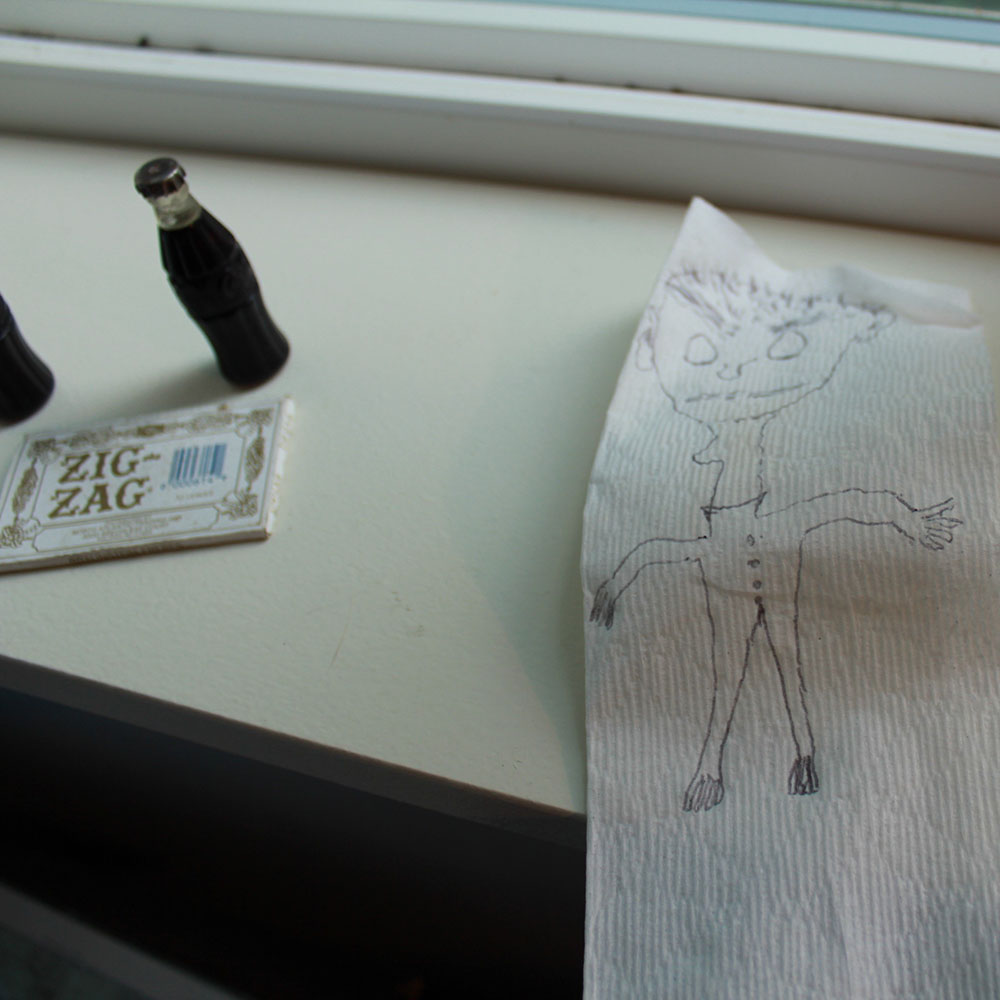
In 2011 my father died while at work. He was sixty-one years old and about four years off from his dream of getting into the woods. He had a heart condition, but didn’t know it. In the last months of his life he was in pain and drew a picture of how he imagined his tormentor. A chronic heart condition can result in acid-reflux and his throat was scarred and in constant pain as a result. He was in the bullpen at the King Country Metro East base and was on his way to a second shift–an overtime shift. He stopped and then spiraled his arms and collapsed and was unresponsive. Although he was still alive when the EMTs arrived, he died before he reached the Overlake Hospital next to 405 in Bellevue.
Among his papers he kept referring to a creature that lived in his throat, and here is a picture he drew of it.
What is Silence?
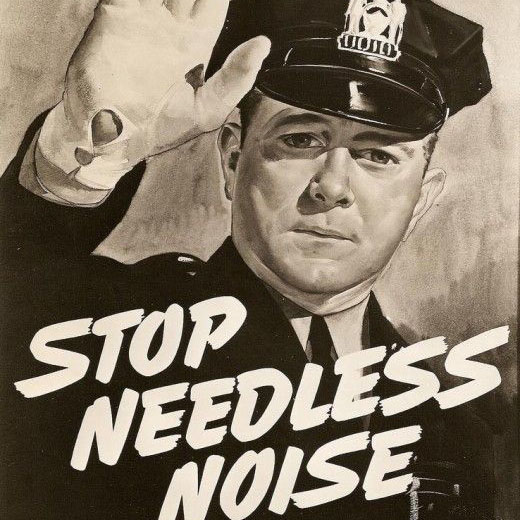
It is understood that you are not to make noise in the library. The movies tell us to silence our cell phones and not to talk. Silence is not nothing; silence is the absence of communication. Silence is the number zero of genres.
To understand a bit more about what this means, consider nothing. Nothing is not silence. Nothing has no potential to make a sound. Nothing is less than a subtraction or an absence, nothing is not a negation. Nothing is a totality of not.
Null is not a value. It is a type. But null has no value. Null does not exist on the number line but rather exists in another domain. Zero, on the other hand, exists on the number line resting on the dial between -1 and 1.
For me, the easiest way to grasp this is to consider my daughter. I was thirty when she was born. For thirty years before her existence, it wasn’t just that she was yet to be born. There was no seeming potential for her existence. My apartment didn’t have space for her. I didn’t prepare food for her. I didn’t wonder where she was. She wasn’t. She didn’t exist, just as anyone yet to be born does not exist, just as ideas yet to have been conceived, do no not exist, buildings not yet drawn, books not yet written. She was null.
Now that she exists, reality cannot exclude her. Her absence wouldn’t preclude that she does exist.
There is a famous illustration of this paradox. “Don’t think of an elephant.” As soon as I have inserted an elephant into your head by saying “Don’t think of an elephant,” this elephant exists in the room and in your head.
If my daughter didn’t exist, I would not miss her. Her existence is as essential to my existence as my own, and yet there was a time when she didn’t exist and I did.
Silence is a genre as fundamental to expression as fiction, nonfiction, poetry, and drama. If my father’s photographs are silent, how do I make sense of them? Can you make sense of silence? What did he mean by such a prolonged act of silence, such a huge work of nullity?
What is Genre?
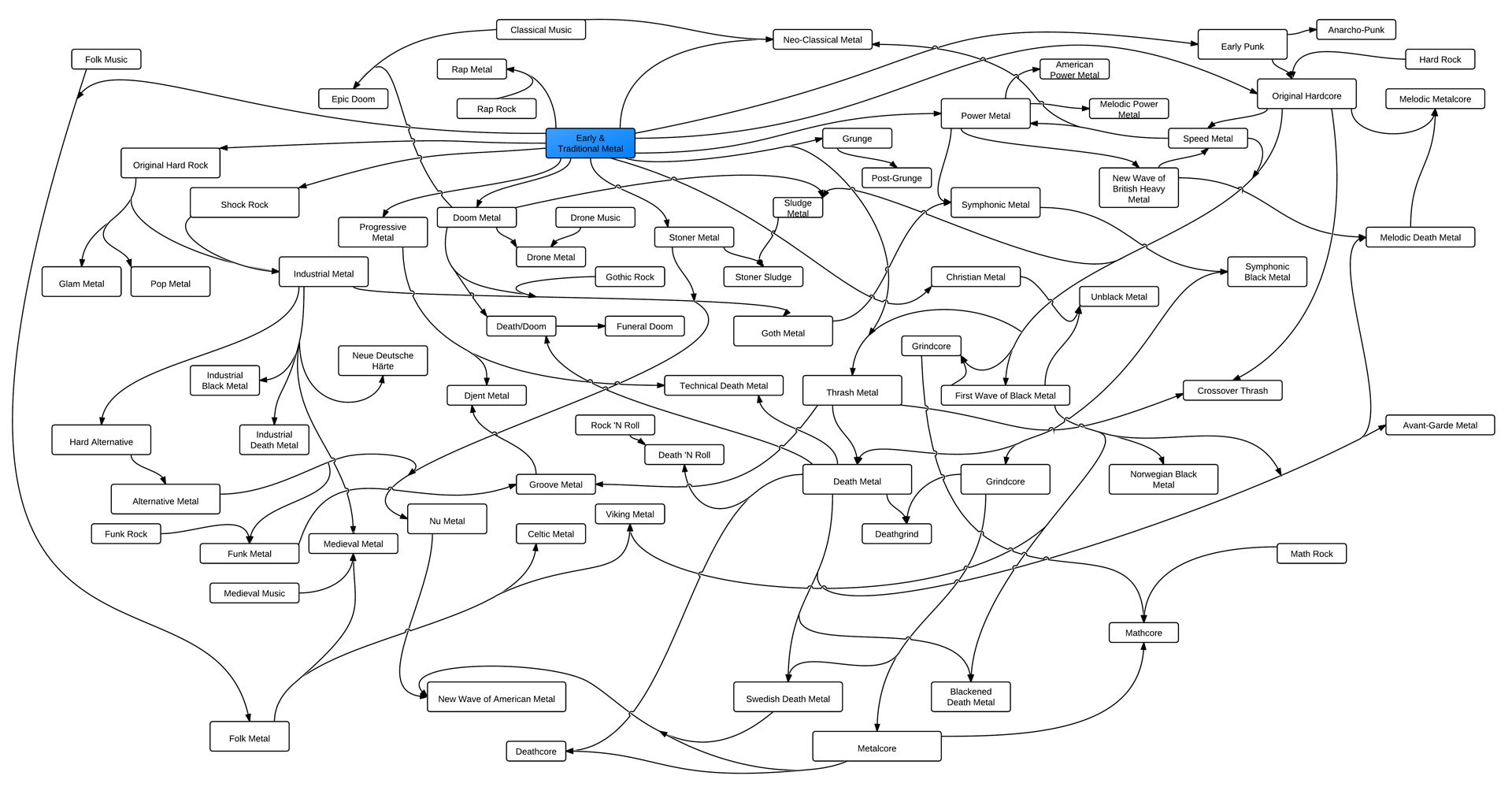
A genre is a set of conventions. A convention is, by its nature, subjective and something that is agreed upon. What we consider genres are patterns that have been calibrated. We know that a poem does certain things. A poem is poetic. But is prose poetic? Does prose have to operate in opposition to poetry?
Two clearly opposing genres are nonfiction and fiction, since nonfiction is the negation of the qualities of fiction. Fiction is a lie. When someone tells you a story that is a fiction, you know that everything they are telling you could be made up. This results, in the audience always wondering why that detail? Why did that thing happen? A compelling fiction is supported by an interior logic that alleviates these questions, and you might think then that the principle trick of a work of fiction is to create a compelling enough interior logic that the lies which have been strung together, hold together, in a way that resembles a reality. But, when it comes to the material of fiction, the house may not exist at that address, and that address may not even be real, and that red couch is red because of the things that happen on that red couch. It is so much more fictionally logical for those things that occur on that couch to occur on a red couch rather than a white couch.
Nonfiction, on the other hand, is not a lie. If fiction is a lie, then nonfiction must be a non-lie, but does that mean it is true? Nonfiction is typically constrained by the materially verifiable. That house is actually located at that address. There is a photo–so that couch was red.
If we were to create a massive School of Rock style diagram of all genres, the far edge would have newly coined fragments of subgenres such as slipstream, steampunk, Star Wars fan fiction, Reddit ghost stories, and so on. At the very center of the map–the roots of this massive tree–you would have fiction, nonfiction, pictograms, poetry, essays, letters, and silence.
Quick Rhetoric of Photographs
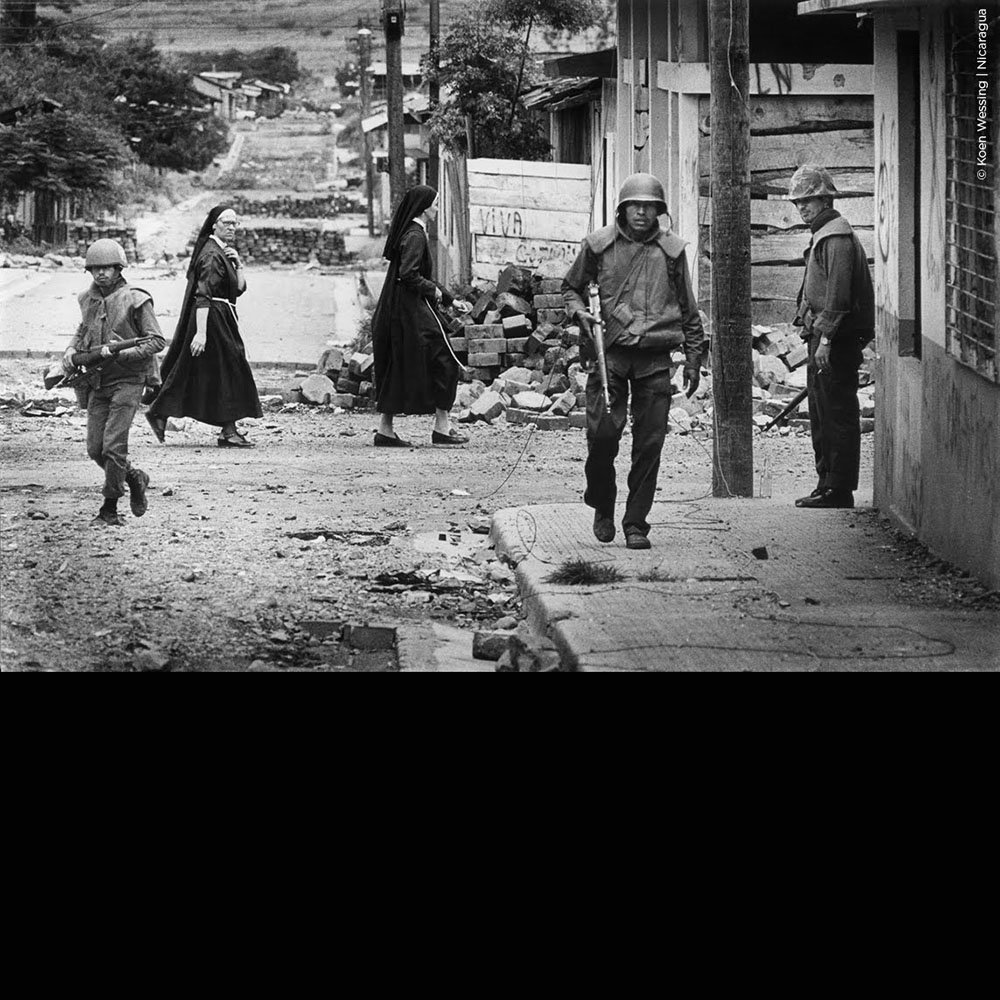
So my father’s photographs were a work in the Genre of Silence. To get to his photos, we need to have a three-minute survey of how photographs speak.
The idea that photographs speak at all, that photographs are enough of an art that they might embody the conventions is the as a genre is well accepted now, but it is still pretty recently that any sort of decent criticism of photographs began. For a time, photographs were not really seen as “art” or even really a genre. They were a mechanical reproductions of nature. And there is much about the photograph that is artless. It is a machine eye that artlessly captures what is before it.
“A few days ago a foreign visitor entered my gallery and spent about fifteen minutes browsing. She kept coming back to one image and finally commented: ‘I love that image and if it was a painting I would buy it.’ I asked her quite politely why it would have to be a painting. She replied that it is ‘only a photograph’ and brush strokes would allow her to experience the emotion the artist experienced while creating it and photography is only pictures created on computers. I then explained the picture was originally created on film, with a lot of planning and working with a native Navajo guide to find the spot that I pre-visualized. She shook her head and said, ‘I’m sorry, it is only a photograph,’” – http://photo.net/casual-conversations-forum/00XQrP
But we can mock this. Photographs can be art. But can any photograph be art? Like written texts, photographs come in genres. There are snapshots, black and white images, selfies, portraits, so called ‘fine art photographs,’ and pornography. If we can distinguish then between nonfiction as not being made up) and fiction (as being completely made up) then the photograph is a peculiar kind of genre, but a genre nonetheless. It is a genre that depends, even more than nonfiction, on there being a material and variable reality in front of the image.
It is those objects in space, at that time with that light; an instant that is mechanically sliced from the flow and rush of phenomena and flattened onto a plate.
Barthes
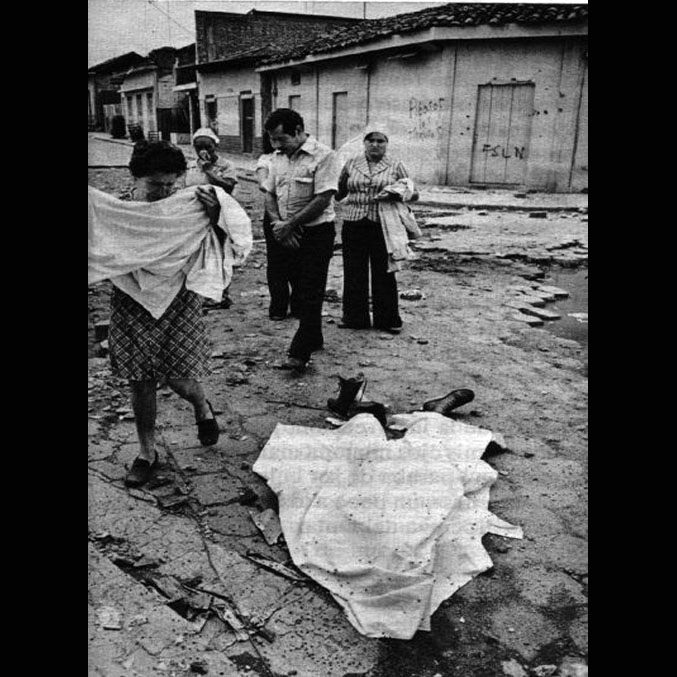
Roland Barthes wrote one of the essential books on the significance of photographs: The Camera Lucida, which provides some simple and yet useful concepts for understanding not just how a photograph talks to us, but how we hear this communication, and finally the trickier relationship of the “us” as an observer from a point in time and space to the point of time and space in which the camera caught the subject. His book is, as much a way of understanding the language of photos as it is how photos provide a simultaneous access and separation from the subject – in this case his dead mother.
“Stadium” is a Latin word that means “study” that Barthes lifts to refer to this particular field of meaning in an image. It is essentially the bed in which the photograph exists. For instance, it is the way a piece of music may be 4:4 time, or a short story may be naturalistic (for the most part). It is the fabric of the image itself. The stadium depends on the genre of the photograph itself. The stadium has been learned through repetition. This is an image of the seaside, this is a portrait, etc. It is a field of meaning.
The “punctum” exists in contrast to the stadium. There is the field of meaning, and then there is a variation that rises from the image and disturbs the field of the image. The punctum is a novel element. The viewer perceives the punctum though the punctum, which is already a part of the image itself.
“Satori” is the something in the image that provokes a jolt in the viewer. Satori is that element that forces the image into tensions between time and timeless. A photograph always exists in time, and yet a photograph is still.
Barthes also says of the photograph that it must be silent. He does not like “blustery” photographs. I take, by this, that he means the photograph contains its elements like a good plate of wholesome food, instead of a plate that a nursemaid is shoving into your mouth. A photograph in the genre of silence is an entirely different manner.
The Woods
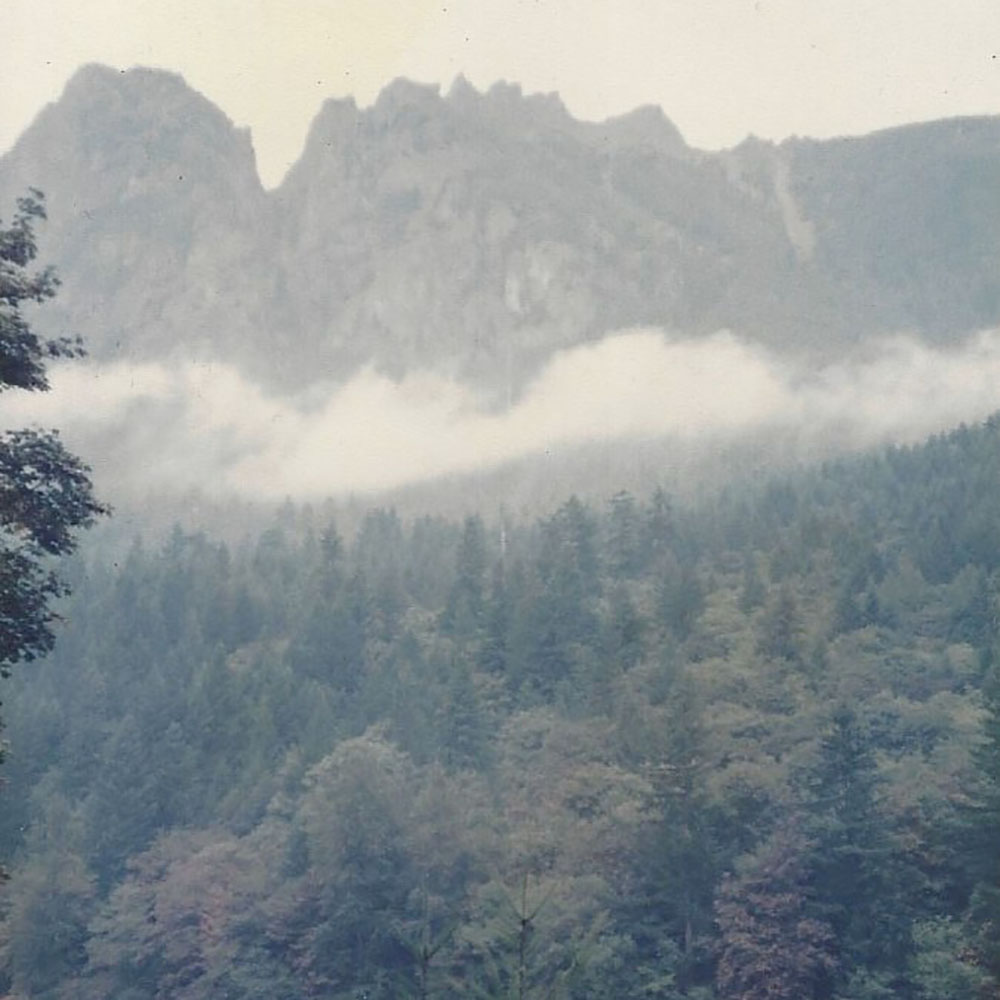
No one was able to capture the moment when my father pin-wheeled and died. That instance was lost. Of course that is proper, but as a perpetual voyeur, I’m curious. I did take a photograph of him later. My father had long maintained, ironically and not ironically, that he would live to be 300 years old. His strategy for living to be 300 years old was that he wanted to live to be 300 years old. You don’t get what you don’t ask for, right?
I took the photograph of the corpse of my dead father in the hospital room with my iPhone. This image entered my photo stream and it is still there among the images of baked goods, vanities from the hardware store, selfies of me walking along the Green River, and images of my wife and daughter involved in our daily lives. That is the image which has the stadium in the genre of open casket portrait, had the punctum of his expression—an expression that was his face completely at rest. My father’s face was always in motion, always calibrated in some way, and here his face was slack. This was an image of a body that lacked the presence of a person, and this became the satori, the element that leaps out and continues to leap out of the image, although I have long ago hidden it from casual view in my timeline.
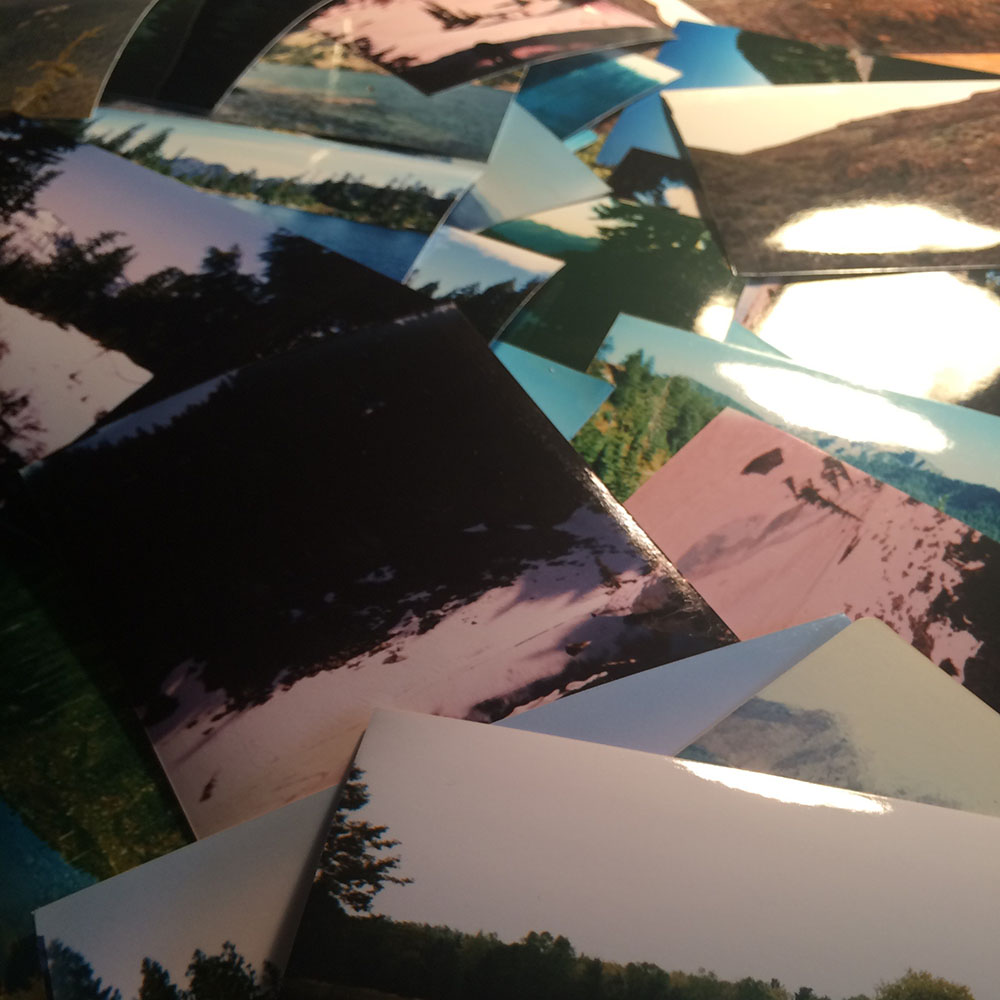
In my father’s shoeboxes are thousands of photographs. They have been taken on all sorts of cameras. Mostly they are the cheap sort of camera you could buy for less than the cost of a roll of film. The film was the expensive part. My daughter does not remember the world before digital cameras were embedded in everything. In my father’s world, the camera had moved from an obscure and expensive object to a mass consumer object by the end of the 1960s. And by the late 70s you had a little plastic box with the film and maybe a large flash about the size of an ice cube. You would press a button, and then the gears and other mechanical components inside of the camera would go to work, expose the film to the world in front of you, and then advance the film into a protective covering. When you were done pressing the film and had maybe twelve or eighteen exposures, you would remove the little canister. It contained the exposed film. You couldn’t expose it to the light or you would ruin your pictures.
And then, you took it to get developed at the drug store. They would collect the film and send it to a lab to be processed, and then return the developed film. The entire process would take a week or so and that was fast. You could also get filmed returned as quickly as twenty-four hours if you took it a special place or a drug store that offered fast processing.
If you recall, to take these images, you could only look through the tiny plastic view finder that gave you only the faintest approximation of what might hit the exposed film. In short, it was always a crap shoot.
Often, you might see a fantastic vista such as Mount Rainier from the Green River Valley and you would line it up in the view finder, click a photo, and maybe another one in case the first didn’t turn out. And then, two weeks later you would get back your images, somewhat removed from context, and then bam – the images you had intended to be of Mount Rainer would be of a blurry plant, or maybe a mostly-in-focus tree leaning at one edge of the frame and the distant, and the icy glaciers of Mount Rainer, which were the reason you had taken the image in the first palace, would be long gone. And you would go, a dud, and then the entire roll of film would have two or three images, at most, good enough to go into the photo album. The rest would get thrown away.
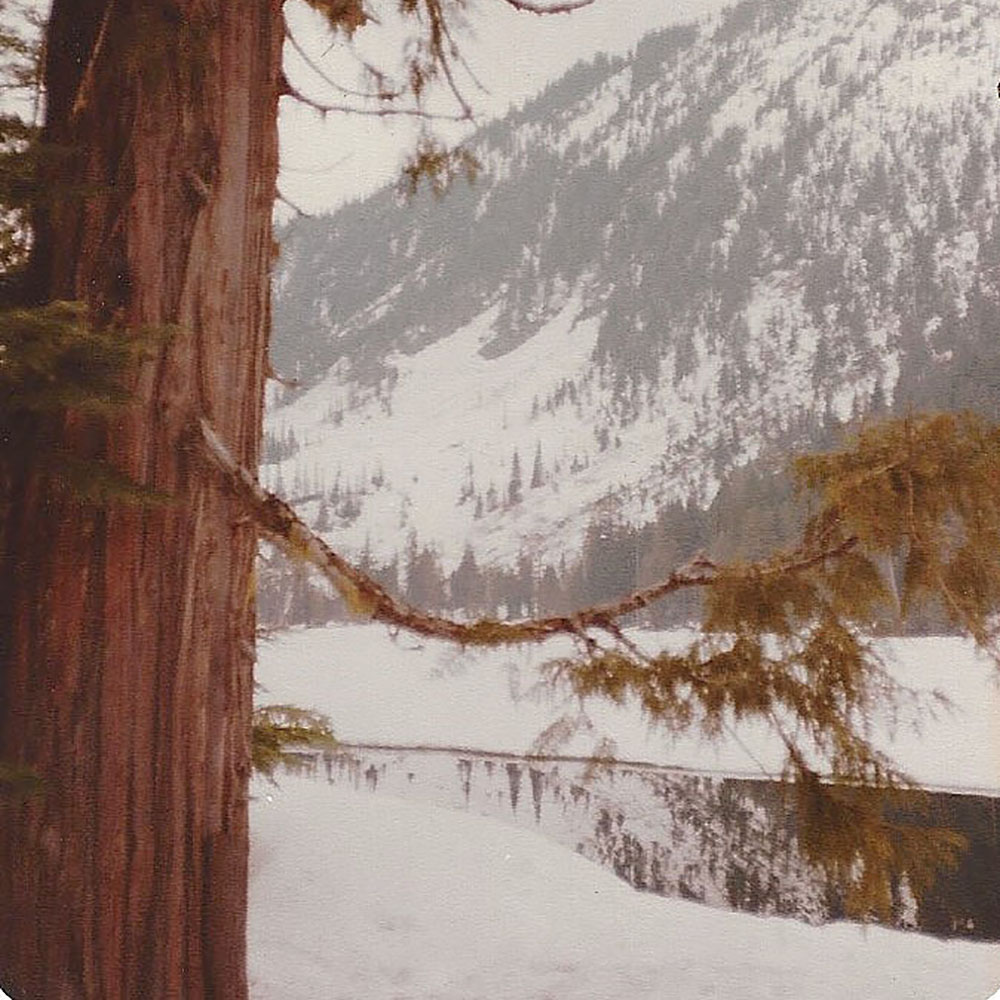
In this case, taking photographs was as much about curating the happenstance and random accidents of the consumer camera as it was in taking photographs.
My father, however, kept these images and seemed to have specialized in the happenstance and random image of the Central Cascades.
These are images that are all stadium and no punctum. Without punctum they lack any possibility of satori. They cannot refuse to say anything. They communicate little except the reality of their own existence.
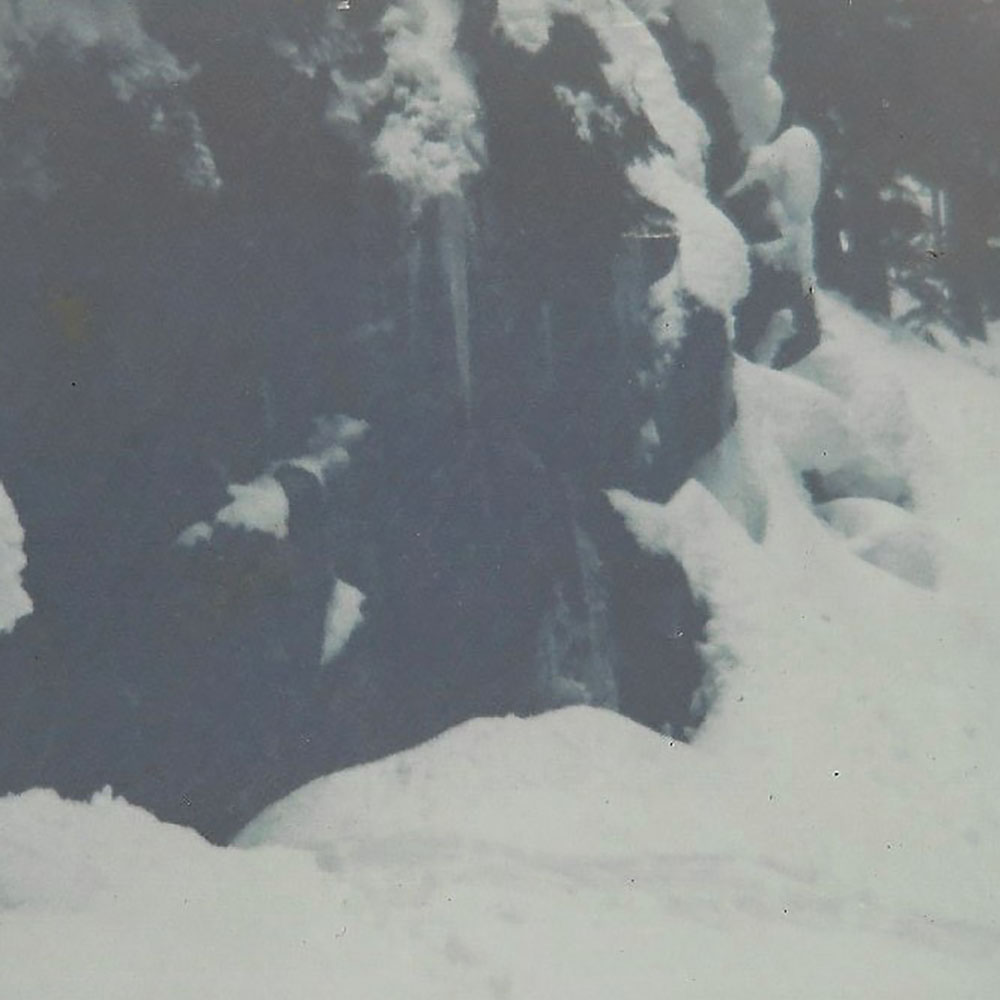
Each image is a document that my father was alive and had the intent of capturing an image at the time he took them. So you know his camera was in the woods. You know he kept the developed the image. He kept the image, and he placed the image in a box.
A photo is not just haunted by death, as Susan Sontag has said, but a photo is haunted by life; the transitory nature of existence, the “suchness” of a moment. Even the most trivial snapshot, a dud, captures this flow as a thing. The image and film itself will fade and finish. It is a brief echo of the continual flow of things coming into and going out of being.
Death returns you to nothing, and you are as if you were never. Silence is resistance to the inevitability. We are surrounded now in the data of our lives, our own corpus of images and timelines. The boxes of photos are the accumulation of my father’s life, the byproduct of being alive and standing alone in the woods.
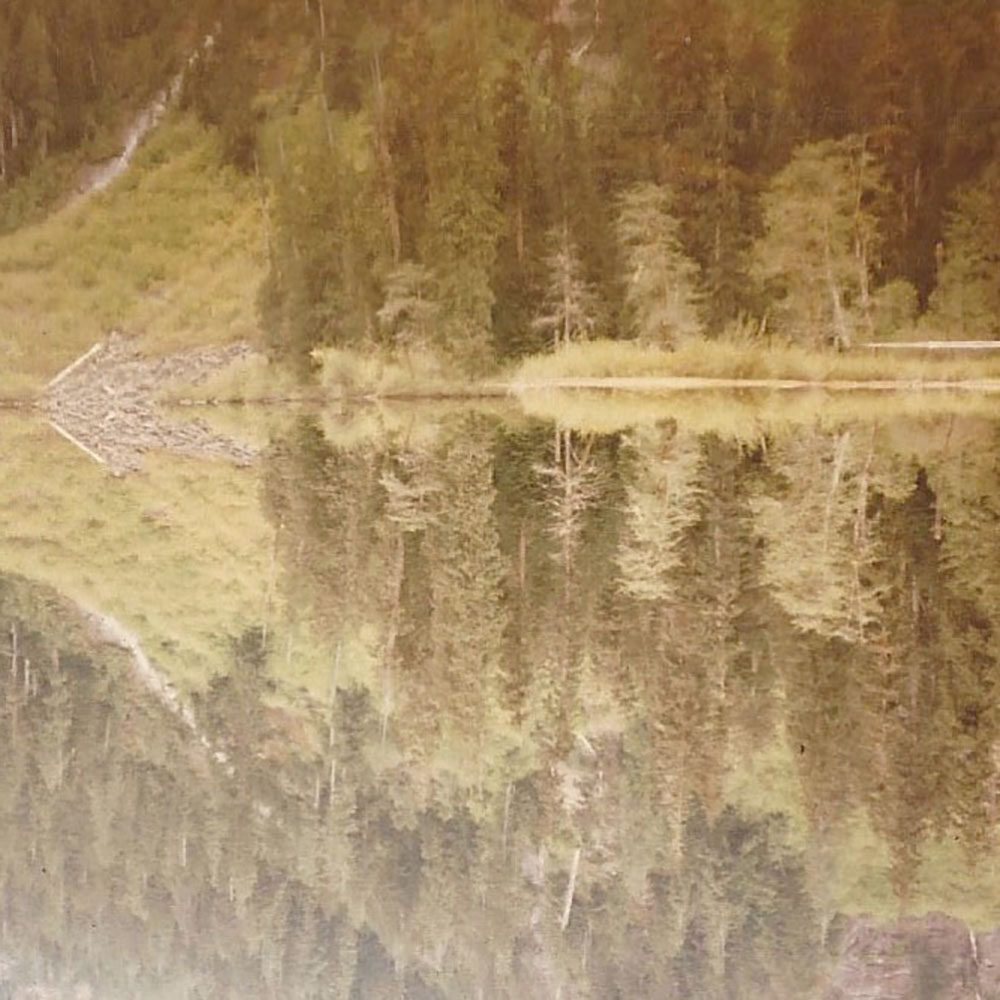
History of publication: This text originally a talk given at the Frye Art Museum on Saturday 10/10/2015 along with Gary Groth and John Olson as part of the the Genius Literary Festival. It was later published by Connotations Press as a PDF in a Flashplayer in September of 2016, and then my blog in 2017.